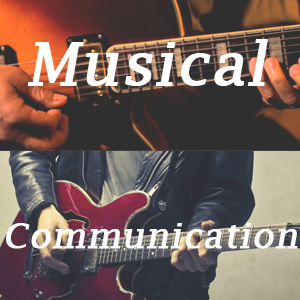Have you ever listened to or overheard a conversation between seasoned
musicians? The phrases, terminology and body language are very different from
non musicians. Depending on what type of musician you are talking to, the words,
lingo and animations vary. For example a conversation between two jazz
performers might sound like this:
That cat can really play in the pocket on Birds up-tempo swing tunes, and I
was digging the groove on the walking bass line.
Rock musicians might sound like this:
The drummer crushed it with those 32nd note fills on the hi hat, and I was down
with the syncopation of the double bass drums on his second solo.
Finally the well trained classical musician who wrote the book on terminology
might sound like this:
Did you notice the strings in perfect unison with the reeds while building a
perfect crescendo at the start of the 2nd ending in the 3rd movement.
There are thousands of musical terms that make communicating easier for musicians.
Today I will show you a few of the basic terms that are built into almost
all styles of music. I will break them down into 5 categories with 3 sub categories.
#1 Parts of a Song
a. Verse – In typical popular music the first set of lyrics would be considered
the 1st verse, and would almost always change going from verse to verse telling the
story.
b. Chorus – Unlike the verse the chorus usually retains the same lyrics and is
often the most memorable part of the song.
c. Bridge – In pop and rock songs, the bridge is a section where the lyrics or
music connect or bridge the verse to the chorus. This is usually done with a
different melody line and with different lyrics.
#2 Style of a Tune
a. Swing – A form of American music developed in the 1930’s which has a
strong rhythmic groove or drive. The emphasis in swing is on the offbeat of the
music.
b. Waltz – In a Jazz context Waltz would be any piece of music written in ¾
time or 3 beats per measure. In classical music it is also played in ¾ time but
traditionally used for ballroom dancing or folk dance.
c. Bossa – Short for Bossa Nova is a genre of Brazilian music made popular
in the 1950’s and 60’s. Bossa has a swaying feel rather than a swinging feel. Bossa
like most Latin based styles of music incorporates a lot of syncopation.
#3 Navigating a Tune
a. Coda – Primarily a term that designates a passage of music to the end of
the tune. The symbol looks like a circle with two lines going through it.
b. D.C al fine – D.C. or (Da Capo) means repeat to beginning of the song, then
to the word fine which means end.
c. Treble Clef – Or G Clef is a sign indicating the pitch of written notes. The
Treble Clef as its name implies, is reserved for instruments that can produce notes
with a higher pitch as opposed to the bass clef designated for lower pitched
instruments.
#4 Dynamics
a. Forte – Is a musical term which means to play loudly at that section of the
music.
b. Decrescendo – Is a sign that looks like this ( >) letting you know that the
music will have a gradual decrease in force or loudness.
c. Fermata – Is a prolonged tone, chord, or rest beyond its indicated time. A
good example would be in the tune Happy Birthday, when you come to the
person’s name it is held for a longer time than the music allows for. Or in the Star
Spangled Banner when you get to the word free.
#5 Tempo
a. Andante – Means in a moderately slow and even tempo. It can also mean
gently or flowing.
b. B.P.M. – Refers to beats per minute which is attached to a number. For
example a song that has 80 bpm is exactly twice as slow than a tune that has 160
bpm in it. Marching band and Disco music usually play songs that uses 120 beats
per minute probably because it is easy to march to and also to dance to.
c. Up – Short for upbeat, is a jazz term indicating that the music should be
played quickly.
Just like most professions there are ways to communicate that are outside of
(normal) conversation. A good example might be the Lingo between Lawyers,
Doctors, and Law Enforcement. Another good example would be wildlife. We
clearly don’t understand the language but they are communicating quite well with
each other.


These entertaining and stimulating games offer an opportunity to
find out fun possibilities.
My homepage unblocked games 66 punch the trump